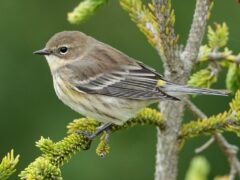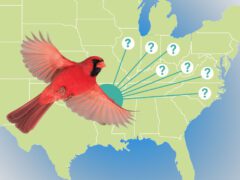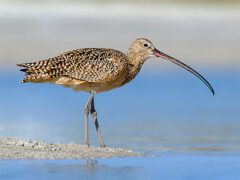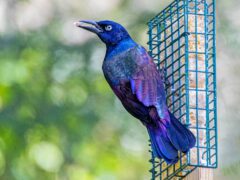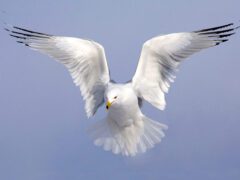The Four Keys to ID
- Size & Shape
Swainson’s Thrushes are medium-sized thrushes—slim songbirds with round heads and short, straight bills. Their fairly long wings and medium-length tail can make the back half of the bird appear long.
Relative Size
Smaller than an American Robin; larger than a White-throated Sparrow.

 between sparrow and robin
between sparrow and robinMeasurements
- Both Sexes
- Length: 6.3-7.5 in (16-19 cm)
- Weight: 0.8-1.6 oz (23-45 g)
- Wingspan: 11.4-12.2 in (29-31 cm)
© terence zahner / Macaulay Library
- Color Pattern
These medium-brown birds with pale underparts have spotted chests and large buffy eyerings that extend in front of the eye, creating “spectacles.” The whitish throat is bordered on each side with a dark brown stripe. Swainson’s Thrushes breeding on the Pacific slope of the U.S. and Canada have warmer brown upperparts (see Regional Differences).
© Shawn Billerman / Macaulay Library - Behavior
Swainson’s Thrushes are shy but vocal birds that skulk in the shadows of their generally dark forest-interior habitat. They forage for insects and other arthropods on or near the ground. On migration, particularly in fall, they also eat small fruits such as wild cherries and Virginia creeper.
- Habitat
This is a forest bird, rarely found far from closed-canopy forest. Breeding habitat is a mix of deciduous and coniferous forest (though sometimes includes pure deciduous forest). In the Rocky Mountains and in Pacific states, look for them in dense alder thickets along streams running through coniferous forest.
© Kendall Van Zanten / Macaulay Library
Regional Differences
Swainson’s Thrushes that breed in the Pacific states (often called the “Russet-backed” Thrush) are rusty-brown above, with thinner, paler eyerings and medium-brown chest spotting. The widespread eastern and northern form (often called “Olive-backed Thrush”) is common east of the Cascades/Sierra Nevada.












